Our Findings
Irrigation Trial
Below are the details of our observations of the Irrigation Trial one year after planting. For information about the first year of the irrigation project, see the individual grasses links at the left (Tall Fescue, UC Verde Buffalograss, and Sedge).
The irrigation system consists of one 6” pop-up head in each corner of each 12’ x 12’ plot. Each head has a Hunter Rotator® MP-1000 nozzle.
Three irrigation levels were used for each species: high (80% ETo), medium (60% ETo), and low (40% ETo). We started the deficit irrigation treatments 7/28/2011, initially watering for the same run times at the interval that gave the desired irrigation level, but switching to a schedule that gave different run times and a 4 day interval. The latter scheduling was chosen because we learned that it can better mitigate the effects of drought stress. On 9/23/2011, we brought all plots back up to full irrigation (80% ETo) in order for all plots to fill in and develop deeper root systems to prepare for reinstatement of treatments in spring 2012.
Tall Fescue
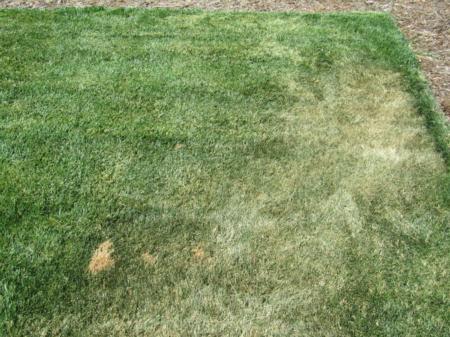 Drought damage 8/12/11 |
We found that, as expected, Tallfescue will not tolerate irrigation at only 40%ETo; areas of this plot began to turn brown and these areas then merged into a large patch. Even the 60% ETo plot developed small stressed patches
|
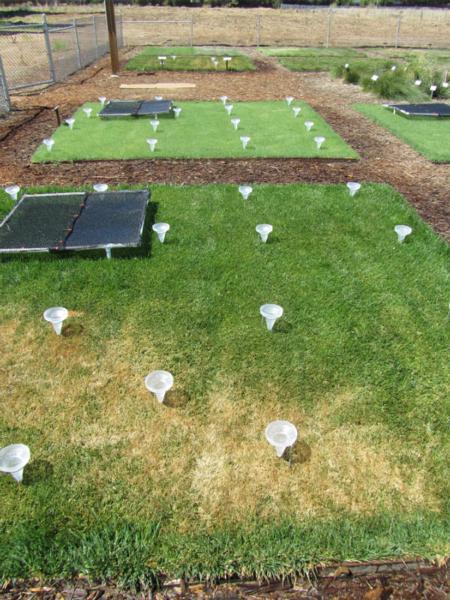 Water audit 8/29/11 |
Because of the location of brown patches in the Tallfescue (all one side), we performed a water audit to ensure proper coverage in that area. Water audit results were uniform over the entire 12x12 plot, so we could only guess that the soil in that area is different than in the rest of that fescue plot.
|
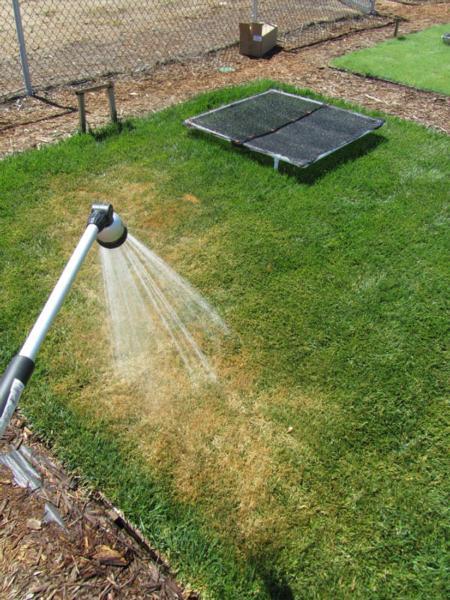 Hand watering Tall Fescue 8/29/11 |
Clipping weights in the stressed plots for Tallfescue and sedges declined in proportion to the stress. In order to prevent killing the turf, we periodically hand watered the stressed patches of Tall fescue (40% and 60%) starting 8/29/2011, and we hand watered the entire 40% Carex plot starting 9/8/2011
|
 Tall Fescue clipping weights |
This chart illustrates the effects of irrigation treatments on Tallfescue clipping weights, calculated as daily amounts since the previous mowing. The 40% and 60%ETo treatments began July 28, and all plots were brought to 80%ETo starting Sept. 23. Clipping weights clearly declined with each deficit irrigation level.
|
Buffalograss
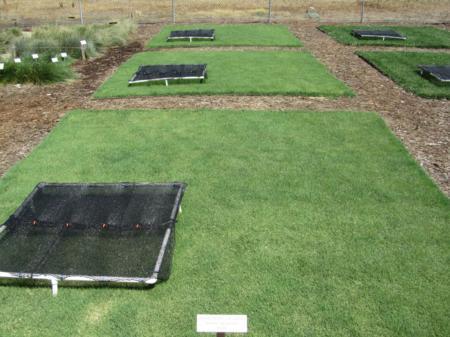 No water stress 8/16/11 |
In contrast with the fescue and sedge, no obvious stress developed with UC Verde Buffalograss. The 40% ETo plot remained green through nearly 2 months of extreme stress, although clipping weights were somewhat reduced in only this plot.
|
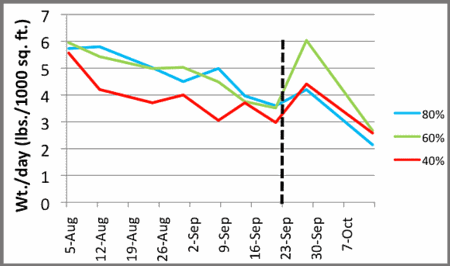 UC Verde Buffalograss clipping weights |
As shown in this chart, clipping weights in the 80% and 60% ETo plots are nearly identical, showing why warm-season turf is typically watered at 60% ETo; the standard for Buffalograss could even be lower.
|
Sedges
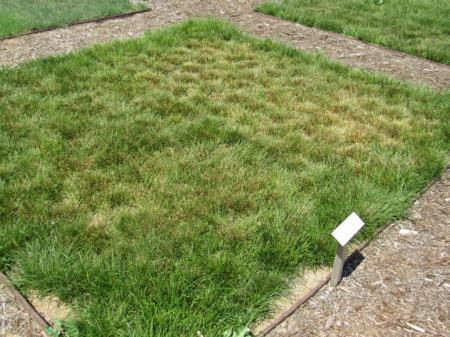 Sedges split plot 8/24/11 (C. praegracilis upper right) |
Surprisingly, the Carex 40% ETo plot (mainly field sedge, C. praegracilis) became very stressed with deficit irrigation. In addition, even with full watering (80% ETo), Carex underwent some summer dormancy – in one area plants completely stopped growing and clipping weights for all Carex plots declined substantially from spring weights.
|
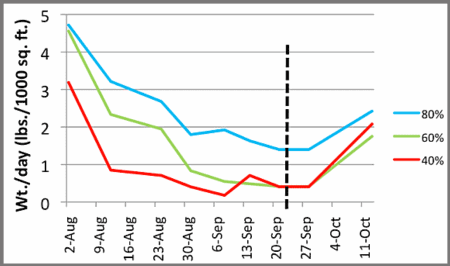 Field Sedge, Carex praegracilis clipping weights |
Field sedge, Carex praegracilis clipping weights, calculated as daily amounts, showing a clear reduction with declining irrigation level. The 40% plot was hand watered starting on Sept. 8. The 40% and 60% ETo treatments began July 28, and all plots were brought to 80% ETo starting Sept. 23. Clipping weights in even 80% ETo plot declined due to summer dormancy.
|
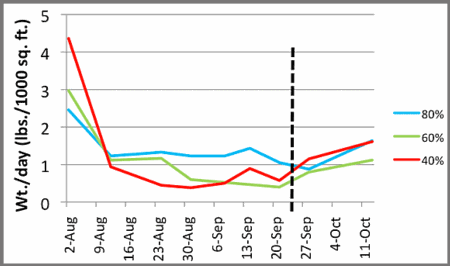 Dune Sedge, Carex pansa clipping weights |
Dune sedge, Carex pansa clipping weights, calculated as daily amounts. The 40% plot was hand watered starting on Sept. 8. The 40% and 60% ETo treatments began July 28, and all plots were brought to 80% ETo starting Sept. 23. Clipping weights in even 80% ETo plot declined due to summer dormancy (even a greater decline than C. praegracilis)
|
Other Findings
 Dead patches in Fescue 7/12/11 |
In late July after a one-week absence, we found large dead patches in fescue. Visual inspection:
We performed a soil drench (following UC IPM instructions) on the north fescue plot:
|
 |
After a soil drench that turned up no measurable insect population, and a lab analysis that was negative for disease, we ended up diagnosing it as damage from canine urine. We suspect neighborhood dogs may have been placed in the 4-foot fence enclosing the project.
|

